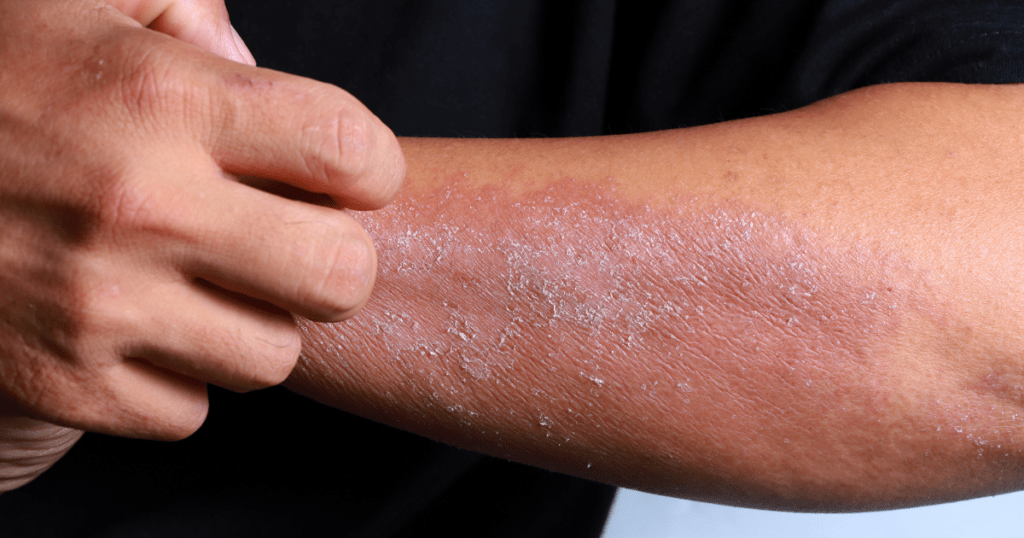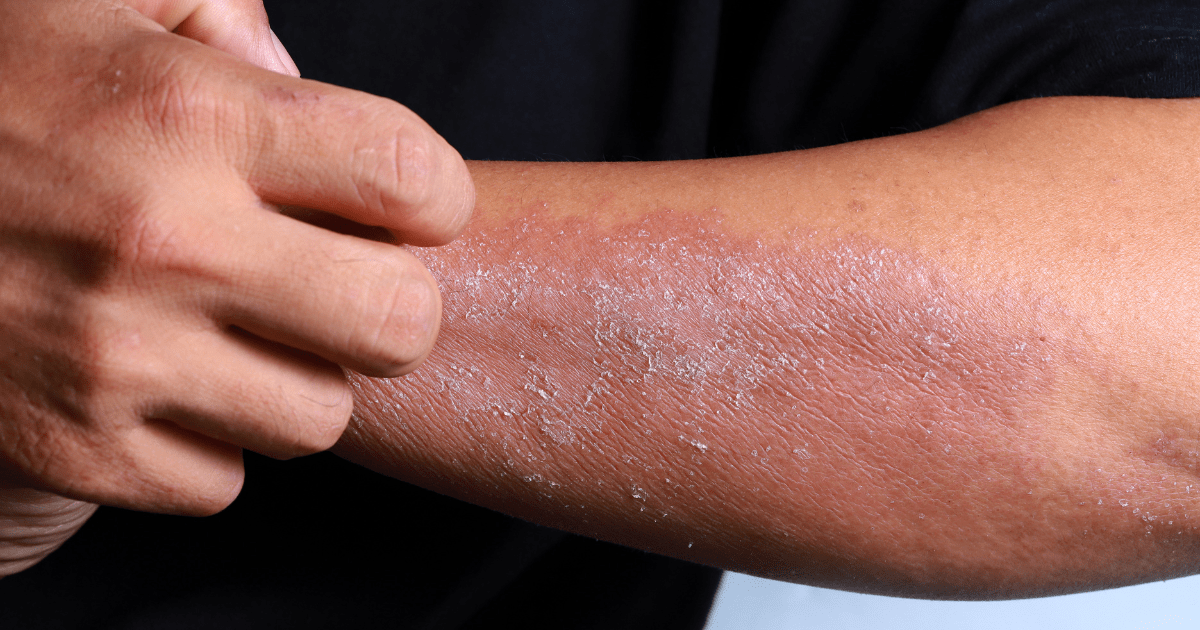Dry Skin: Causes, Symptoms and Management
Learn how to defeat dry skin and achieve a radiant glow with our expert skincare tips.
Dry skin is a common issue that can affect almost everyone at some point in their lives. Certain factors may increase the risk of developing dryness, such as living in dry or cold climates, frequent outdoor work, frequent hand washing, underlying health conditions like allergies, and being 65 years of age or older.
Dry skin can alter the skin’s texture from soft to rough, potentially causing itchiness and changes in skin color. This condition can manifest as small patches of the skin or affect larger areas. While dryness is generally harmless and only causes temporary discomfort, severe dryness can lead to skin cracking and painful sores. In such cases, it is essential to treat the affected skin like an injury or wound to prevent infections.
Dry skin, or xeroderma or xerosis, occurs when the skin lacks sufficient moisture, resulting in a rough and sometimes itchy texture. In severe cases, xerosis can lead to skin flaking, scaling, and even cracking, which may cause discomfort and bleeding.

What are the types of dry skin
Various types of skin dryness include:
- Contact Dermatitis: This condition arises when the skin comes into contact with substances that trigger irritant or allergic reactions. It often leads to dryness, itching, redness, and sometimes a rash. Common culprits include nickel in jewelry, certain cosmetics, detergents, and medications.
- Eczema: Eczema encompasses a group of skin conditions characterized by red, dry, itchy, and bumpy patches. Severe forms of eczema can cause skin cracking, making individuals more susceptible to infections. This condition can worsen due to irritants, allergens, and stress.
- Seborrheic Dermatitis: Dryness on the scalp is often associated with dandruff in adults or cradle cap in infants. It can also manifest as dry, flaky patches on the face, chest, and skin creases, such as those inside the arms, legs, or groin. Seborrheic dermatitis can occasionally affect the navel. This condition arises when the body reacts to normal skin yeast.
- Athlete’s Foot: Athlete’s foot, caused by a fungus, can mimic dryness on the feet. When this fungus affects other body parts, it is called “ringworm.” Those with athlete’s foot may exhibit dry, flaky skin on the soles of their feet.
Symptoms of Dry Skin
Symptoms of dry skin may include:
- Skin tightness.
- Rough and dry skin.
- Itching (pruritus).
- Flaking or scaling of the skin.
- Cracked skin, resembling a dry riverbed.
- Fine lines or cracks.
- Changes in skin color.
- Deep cracks that may bleed.
To determine whether you have dry skin, you can perform a simple test at home by lightly running your fingernails across your skin. If you observe flaking, it is indicative of dryness.
Causes of Dry Skin
Dryness of skin is mainly caused by a lack of moisture within the skin layers. Factors contributing to dryness include:
- Age: As individuals age, the skin’s moisture-producing oil glands become less active, leading to dryness, thinning, and decreased elasticity.
- Climate: Environmental temperature plays a role in skin hydration, with low humidity, desert-like, or cold climates exacerbating dryness. Dryness is often more pronounced during the winter but can occur throughout the year.
- Health Conditions and Genetics: Some people are genetically predisposed to dry skin, while certain health conditions, such as allergies, eczema, diabetes, and kidney disease, can cause dryness as a symptom.
- Occupations: Certain professions, especially those involving outdoor work, chemical exposure, or frequent handwashing, can lead to dryness. Examples include healthcare providers, hairstylists, and farmers.
Diagnosis Of Dry Skin
Diagnosis typically involves a visual examination by a healthcare provider. Often additional tests are required to identify underlying health conditions contributing to dryness, such as allergy tests, blood tests for diabetes or kidney disease, or skin biopsies for conditions like eczema.
The treatment of dryness primarily focuses on rehydrating the skin. Treatment options may include:
- Moisturizers: Moisturizers are the cornerstone of dryness treatment. They help smooth and soften the skin, prevent cracking, and restore the skin’s natural barrier. Moisturizing products come in various forms, including ointments, creams, lotions, and oils, and may contain ingredients like emollients and hyaluronic acid to hydrate the skin.
- Medications: For severely dryness and itchy skin prone to cracking, healthcare providers may prescribe topical steroids to reduce inflammation. In severe cases, oral or injectable medications are prescribed.
Choosing Right Moisturizer
Choosing the right moisturizer for the skin is crucial. Choose products that are fragrance-free and do not contain ingredients that lead to skin dehydration (such as isopropyl alcohol or sulfates), and include ingredients like petroleum jelly, hyaluronic acid, glycerin, or lanolin to lock in moisture. Some moisturizers may also include hydrocortisone steroids to relieve itching or offer sun protection with SPF. Depending on the application area, you may need different moisturizers for your face and body.
Ointments and creams are generally more effective and less irritating than lotions. Ingredients like jojoba oil, dimethicone, lactic acid, mineral oil, shea butter, and petrolatum are commonly found in effective moisturizers.
If dryness persists despite using moisturizers, consult with a healthcare provider or dermatologist to find out underlying causes and alternative treatments.
Maintaining proper hydration is essential in managing healthy skin. Avoiding alcohol, caffeine, sugar, and excessive salt intake can help prevent dehydration. Quitting smoking is advisable, as nicotine can contribute to skin dryness.
Untreated or severe dryness can lead to cracks that may bleed and increase the risk of infections. Persistent itching or dryness may be associated in some cases with underlying health issues, such as diabetes or kidney disease. Therefore, it is essential to manage dryness promptly.
To manage dryness effectively, moisturize your skin daily, especially in the morning and before bedtime, or after bathing when your skin is still damp.
Prevention and Management
Prevention of dryness at home can be achieved by:
- Using a mild, fragrance-free, moisturizing, non-soap cleanser for cleansing.
- Taking warm (not hot) baths or showers.
- Managing stress, as stress can exacerbate skin conditions like eczema.
- Minimizing sun exposure, as excessive sun exposure can deplete skin oils and moisture.
- Apply moisturizer immediately after bathing while the skin is still damp.
- Patting the skin gently with a soft towel.
- Staying well-hydrated by drinking an adequate amount of water.
- Using a humidifier to increase moisture in the indoor environment.
If recurring dryness is a symptom of an underlying medical condition, a dermatologist may provide specialized care.
If you experience persistent itching that disrupts sleep or daily activities, skin redness, swelling, or pain, or if you develop a rash, you should contact a healthcare provider.
Sometimes, individuals may find that their skin remains dry despite using moisturizers. This can be due to various reasons, such as:
- The moisturizer used may contain ingredients that are not suitable for the specific skin type, including isopropyl alcohol, benzyl alcohol, or sulfates.
- Frequent washing with hot water can contribute to skin dryness.
- Inadequate moisturization throughout the day.
- Using an inappropriate moisturizer for daytime or nighttime use.
- Expired moisturizer.
- Dryness as a symptom of an underlying condition that requires treatment.
If you cannot effectively manage your dryness, seek guidance from a healthcare provider or dermatologist.
Dry skin, while uncomfortable and sometimes unsightly, typically poses few long-term issues. Although it often becomes a chronic condition, it can be managed effectively. Consult your healthcare provider for guidance on preventing and alleviating dryness. If dryness results from underlying conditions like eczema, your healthcare provider can prescribe appropriate medications and offer strategies for managing the condition.
Sources:
Cleveland Clinic. Dry Skin. (https://my.clevelandclinic.org/health/diseases/16940-dry-skin). Accessed September 15, 2023
Mayo Clinic. Dry Skin. (https://www.mayoclinic.org/diseases-conditions/dry-skin/symptoms-causes/syc-20353885). Accessed September 20, 2023
American Academy of Dermatology Association. Dermatologists’ top tips for relieving dry skin. (https://www.aad.org/public/everyday-care/skin-care-basics/dry/dermatologists-tips-relieve-dry-skin) Accessed September 18, 2023
Category
- Health Issues (65)
- Healthy Diet (45)
- Herbs for Health (11)
- Mental Health (31)
- Skin Care (20)

